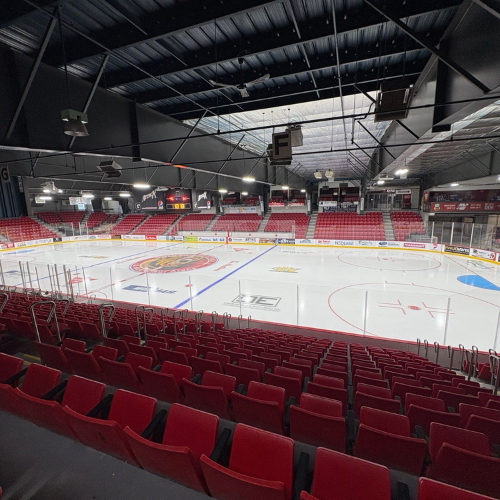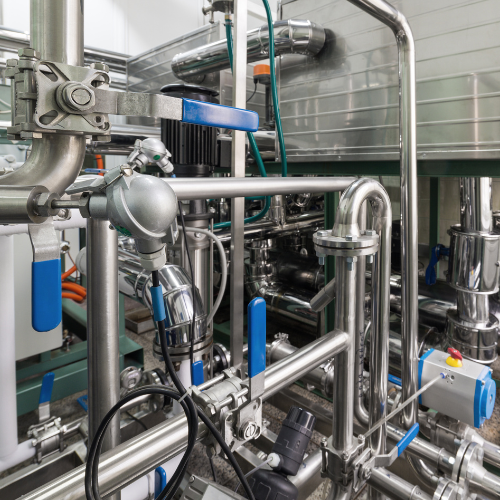CO2 and Ammonia are rapidly gaining momentum in ice rink applications as decarbonization and net zero goals become priority. From an environmental standpoint, natural refrigerants are clearly the future. From a commercial viability point of view, the answer appears less clear. Can natural refrigerant-based ice rinks generate a return on investment? Absolutely.
Historically, fluorinated gases (or f-gases) like HCFCs, HFCs, or HFOs have been promoted as the most commercially viable option for ice rinks. This could have been true to a certain extent 15 years ago but today, the picture looks much different. With the global shift in climate goals and the prioritization of climate preservation, the negative impact f-gases have on the environment and the stakeholder’s bottom line can no longer be refuted, nor justified.
Legislation Favors Natural Refrigerants
The policy landscape is swiftly changing to increasingly regulate the use of f-gases. Not only that, but companies are also feeling the pressure to prioritize set sustainability targets and move away from climate-damaging technologies. The writing is on the wall: anything that contributes to additional environmental degradation or has a negative influence on climate change will soon become obsolete.
Global warming and climate change have always been a concern closely linked to refrigerants. There have been various regulatory measures over the years to tackle this concern – on a global scale (like the Montreal Protocol treaty), as well as a regional one like the game-changing European F-Gas Regulation which is currently being revised to impose even stricter bans on the use of certain f-gases.
Individual countries have also been ratifying the Kigali Amendment to the Montreal Protocol, which commits them to phase down HFCs on a strict timeline. Canada was one of the first countries to ratify, in 2017 already, while the U.S. finally signed in September 2022. There is no longer a question of will it or won’t it – HFCs are officially being phased down in Canada and U.S., just like in Europe.
Some U.S. states are even taking it one step further. The California Air Resources Board (CARB) is leading the way for this state with strict Global Warming Potential (GWP) limits for new equipment. It’s not just California; other member states of the U.S. Climate Alliance have started enacting refrigerant laws that are identical to California's initial phase. While Connecticut, Delaware, Maryland, New Jersey, and New York are in various stages of adopting regulatory systems, while Washington State and Vermont have already done so.
The good news is that there is no regulation calling for the phase-down or -out of natural refrigerants – and there will never be. These refrigerants are naturally occurring and have been used for 100s of years without any negative impact on the environment or climate change.
Unpacking the Costs of a Natural Refrigerant System
So natural refrigerants are good for the environment, what about for your pocket? This is after all one of the most, if not the most important factor that end users consider before choosing a refrigeration system. Is the cost worth it? Can a for-profit or municipal ice rink get a return on the investment with natural refrigerants? Yes! The answer is as simple as that.
Often equated with high costs, sustainable options have been dismissed without much thought in the past. We are, however, at a juncture where sustainability is no longer just an afterthought but a key consideration for any installation.
CIMCO has been an ice rink refrigeration contractors for more than 110 years and we have installed thousands of ice rink refrigeration systems. We have made it our mission to adapt our products and solutions to fit a changing market. Sadly, not all companies in our industry have done the same.
F-gas suppliers have boldly advertised their lack of concern over environmental issues and global warming. Instead, they focused on campaigning against natural refrigerants, packaging claims as fact to ensure the continued purchase of climate-polluting f-gas systems rather. We hear so many stories of how natural refrigerant systems are expensive to install, maintain, and operate; how they require additional human resource intervention. Time for a fact check.
Let’s break down each key cost area and share real results, based on real installations to find out what the story is…
Considering Life Cycle Cost (LCC)
Life cycle cost (LCC) is an approach that assesses the total cost of an asset over its life cycle including initial capital costs, maintenance costs, operating costs and the asset's residual value at the end of its life.
Think about how long a refrigeration system is meant to last. The average lifespan of an industrial natural refrigeration system is generally more than 25 years. During these 25+ years, there are various costs to consider over and above just the initial upfront equipment cost.
An f-gas system may sometimes come with lower upfront costs, but when considering the full LCC, a natural refrigerant system and its resulting cost and energy savings, is better for your pocket. Especially in ice rink applications where natural refrigerants are proven to be more efficient.
1. Capital Cost (CAPEX)
When you compare the capital costs (CAPEX) of installing a natural refrigeration system with that of installing an f-gas system, people are often surprised that this cost is relatively the same. That is assuming that the system lasts its full 25+ years.
The risk, however, is the uncertainty of when the f-gas will be phased out or phased down which often leaves owners with a perilous choice of replacing the system earlier than expected. This is where the total cost of ownership is tilted significantly towards a more sustainable choice.
Even if there is sometimes a premium attached to choosing a natural refrigerant system over an f-gas-based solution, once the system is installed, any upfront capital you may have saved is quickly evaporated through the increased energy costs, high refrigerant costs, and pre-mature replacement of systems well before their natural lifecycle.
2. Operating Cost (OPEX)
Energy consumption has a big impact on operating expenses. The impact of escalating energy expenses can be minimized by reducing the energy consumed by the refrigeration system. In industrial applications like ice arenas, natural refrigerant systems generally consume less energy than f-gases. For example, ammonia has superior thermodynamic properties that result in improved efficiency, thus lowering electricity use and associated costs.
The performance of CO2 can be improved with the use of new innovations such as boosters, ejectors, and parallel compression to offer an efficient solution for every climate condition – even warmer climates previously considered unsuitable.
The f-gas industry markets CO2 as “energy intensive” and when they consider the “design condition” (which is the hottest few hours in the year), most f-gases will be more efficient than CO2. However, this is only for a few hours per year. In Toronto, for example, the average yearly temperature is only 50°F, and at that average temperature (which is a LOT more hours per year) CO2 is more efficient than any f-gas. Thus, f-gas is more efficient only for a few days a year, while CO2 is more efficient when considering a full year.
Centre Sportif Sainte-Anne-des-Plaines replaced its R22 system with a CO2 system and combined with other energy efficiency measures, is reaping the benefits of saving up to $3500 per month.
Another way to shave off operating costs is to invest in heat recovery. Natural refrigerants such as CO2 allow for superior heat recovery technology thanks to the refrigerant’s properties. Instead of wasting the heat produced by the refrigeration system and venting it into the atmosphere, the heat can be repurposed for various needs of a facility – pools, showers, snow melt, Zamboni, stands, HVAC, etc, reducing the need for natural gas boilers.
Thanks to heat recovery, the total energy savings from retrofitting an ice arena with CO2 can range between 30% to 50%, making the investment more profitable and the payback period shorter.
Ed Meagher Arena at Concordia University in Quebec annually saves $40,000 thanks to a new CO2 system with integrated heat recovery.
The Path Forward
For communities to successfully navigate the transition to Net Zero, key decision-makers have to dig deeper and understand the possible returns from natural refrigerants. Natural refrigerants combined with heat recovery and the adoption of green energy is a bullet-proof recipe for achieving net zero emissions.
To start the journey, step one should be setting a baseline with a Greenhouse Gas Feasibility Study. Federal and Provincial funding to conduct the study, as well as grants to cover the project proposals, are available. A team of specialists are available to walk you through the process and define the returns from this initiative.
At CIMCO, we can help you through the process of accomplishing the Net Zero mission. Given the industry's shifting terrain and increasing global regulatory measures, it is clear that f-gas alternatives will dwindle and natural refrigerants will be the only future of ice rink refrigeration. Don’t risk being left behind – it will be costly.

Author:
Cassandra Pereira - Marketing Manager
Cassandra is the Marketing Manager at CIMCO Refrigeration, specializing in sustainable thermal solutions. With a keen understanding of the profound impact refrigeration systems have on the environment, Cassandra is dedicated to promoting CIMCO's innovative, eco-friendly technologies. Through innovative marketing strategies and a commitment to decarbonization, she strives to elevate CIMCO's brand and drive the adoption of sustainable solutions. Passionate about making a positive environmental impact, Cassandra's efforts help position CIMCO as a leader in the industry.
Email: cpereira@toromont.com
Related Posts

Bayshore Community Center

Comparison of Key Refrigeration System Components: Making the Right Choice for Your Operation

Decarbonization Trends Shaping Industries
|
|

.png?sfvrsn=dd56c122_0)

